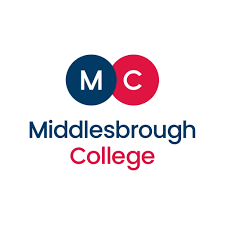The Challenge
As the largest further education provider in Teesside, Middlesbrough College’s mission is to help students fulfil their vocational potential while fuelling the local and national economy with the best and brightest new employees. The college reports that 95 per cent of its students secure employment, an apprenticeship or access to further study - and that this success is down to a ‘positive and vibrant’ learning environment, with a focus on delivering ‘real-life workplace experience.’
James Wells, Head of Digital Curriculum at Middlesbrough says, ‘We are ambitious, with an ongoing strategy to invest in our campus and resources, despite budget cuts in the public sector. As a progressive college, we were pioneering in our adoption of a VLE - purchasing a Blackboard system fourteen years ago. The online tool promised a more measurable and flexible learning experience - but after more than a decade, we needed something new.”
“We faced increasingly negative feedback from teaching staff about the legacy system,” continues James. “They found it limited in its flexibility and that it delivered an inconsistent experience. Student feedback also uncovered dissatisfaction - and it was clear that an extensive re-evaluation process was required.”
The Decision
For Middlesbrough, a new system would have a dual role - preparing students for the workplace by providing them with the ability to learn independently, while freeing the teachers from an unmanageable admin burden. James also knew that re-evaluating the college’s VLE would be a vital step in delivering a more consistent learning experience - but that this ambition could only be realised if teachers, students and managers all embraced the technology. “Getting everyone using the same system would mean that they could better collaborate, offer standardised assessments (formative and summative) - and consistent feedback and rubrics. We knew that this would benefit students and teachers alike - improving the learning experience.”
So the key for the Middlesbrough e-learning team, when they began the evaluation process in 2015, was not just to decide on a new system, but to ensure that a smooth approach to procurement and implementation would ultimately lead to adoption and satisfaction. “Our team was made up of IT, teaching and management staff - and later in the process, students. A mix of participants was vital. We prioritised pedagogy led objectives - but absolutely needed IT buy in and support, too. We knew that an inclusive approach to procurement would ultimately help us to ensure adoption. As part of the process, we visited customer sites. It was important to us to see tools in use - and we’d advise other institutions to do the same. In this setting, Canvas stood out from the competition. Its ease of use and navigation, clean user interface and integration with social media and apps were streets ahead of other tools. The promise of Office 365 integration ensured that students and teachers would be able to work in a familiar and comfortable environment - again, crucial for our adoption ambitions.”
Canvas stood out from the competition. It’s ease of use and navigation, clean user interface and integration with social media and apps were streets ahead of other tools.
James Wells
Head of Digital Curriculum, Middlesbrough College
The Results
James and his team were impressed with Canvas from the get go. “The implementation was smooth and was supported with regular contact with the Canvas customer team. The process always had momentum, and we found having our scheduled fortnightly call, and recorded sessions, was reassuring. Compared to our legacy system’s support, it was a breath of fresh air.”
“As part of the adoption plan, we didn’t want to use old content from our previous VLE,” James continued. “Starting anew and purging old content forced teachers to revisit courses and to use the platform immediately.” For tech-savvy teachers this was straightforward, however for more reluctant staff, some additional support was required, in the form of Canvas training courses “Basics Part 1 and Part 2”. “This course was excellent - and helped even the most reluctant teachers become more comfortable with the system,” James affirmed. “ We held the sessions before and after the summer break, so that our staff felt ready to use the tools immediately in the new academic year.”
However, an Ofsted inspection, which coincided with term starting, added additional pressure to the college. James continued, “On reflection, although taxing - this was a positive experience. Guidance from Ofsted also meant that the tool was worked hard - we immediately began using more sophisticated features to meet the inspection’s stringent demands. And Canvas has risen to the task - surpassing our expectations.”
James finished, “Middlesbrough is really getting its money’s worth out of Canvas. We have a 97 per cent adoption rate in the first year - it took us more than a decade to reach this level with our old system. Ensuring adoption was an involved and complex process - but the usability, flexibility and clear benefits that Canvas provided were invaluable.”
Key Findings
97 percent adoption rate in the first year
Canvas was selected because of its ease of use and navigation, clean user interface and integration with social media and apps
Canvas has risen to the task, surpassing our expectations
Download Case Study
